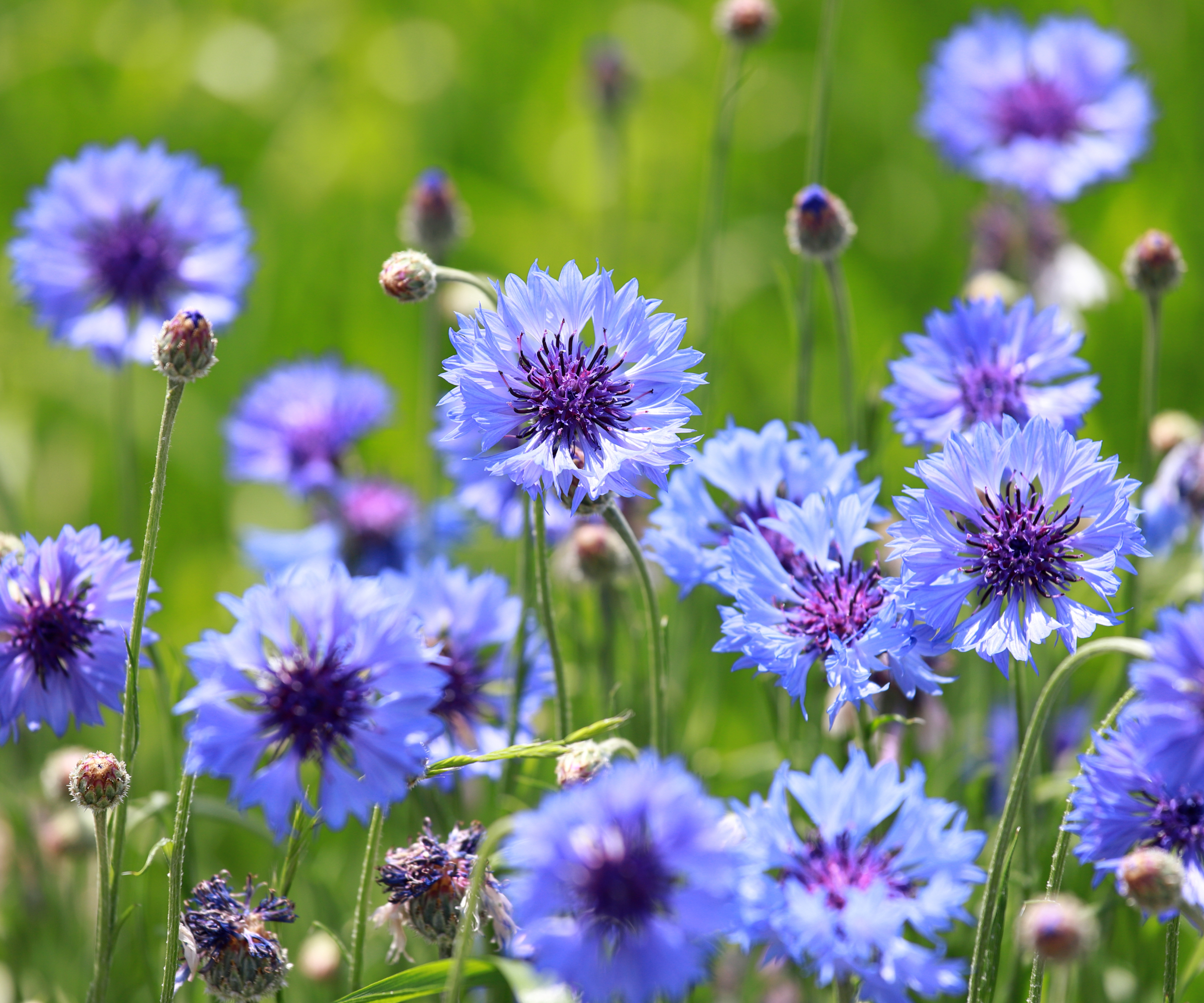How To Care For Creeping Phlox And Get Cheerful Spring Blooms Year After Year
Creeping phlox and its pastel blooms are a surefire sign spring is here! Learn how to grow this gorgeous ground cover and enjoy its flowers for years to come.

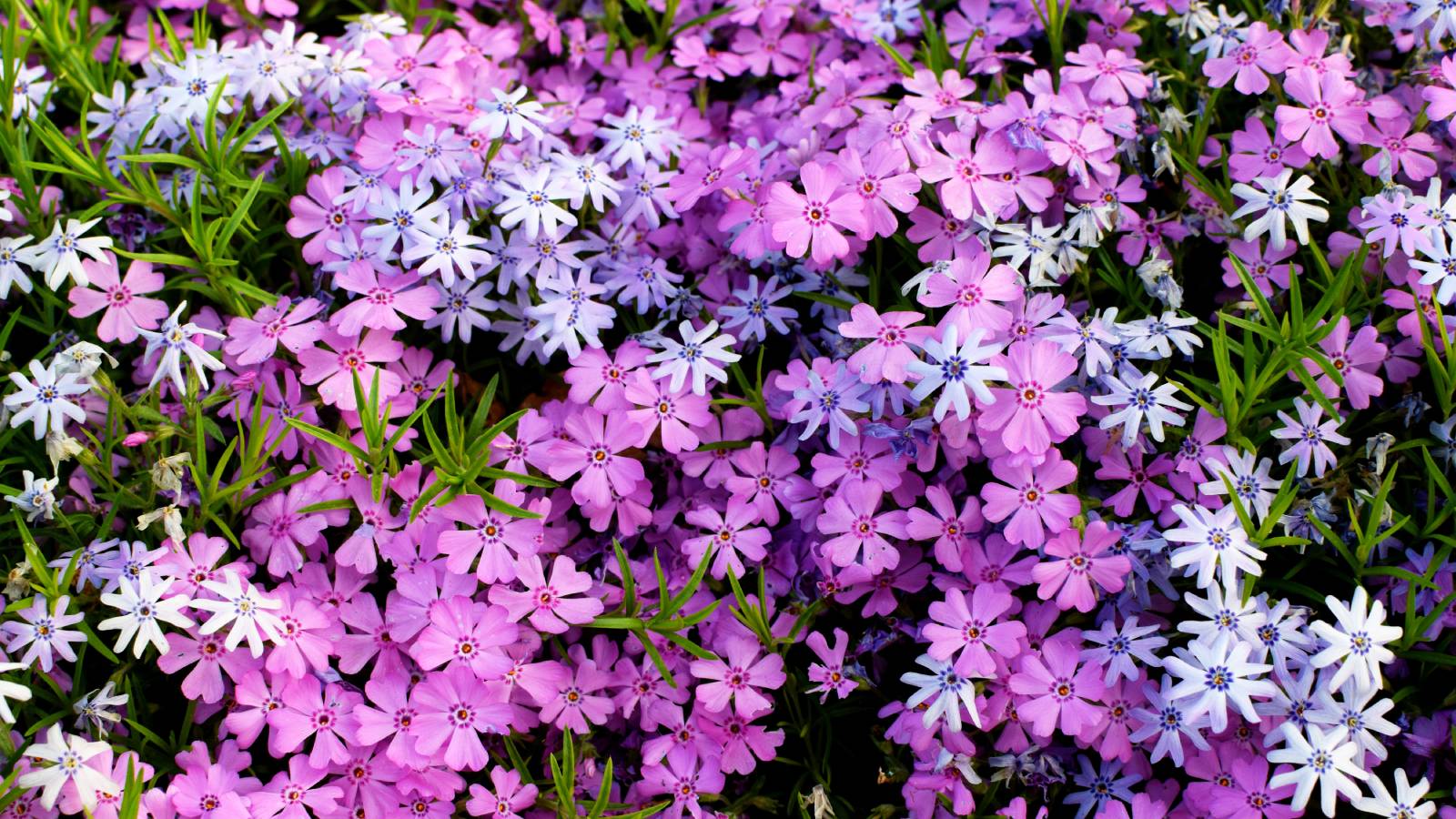
Quick Facts
Botanical name: Phlox subulata
Height: 6-12 in (15-30 cm)
Spread: 12-18 in (30-46 cm)
Sun exposure: Full sun, part shade
Soil requirements: Neutral
Hardiness: Zones 5-9
When to plant: Spring, fall
Bloom time: Spring
Creeping phlox is an easy-to-grow ground cover that creates a truly memorable display each spring. From pollinator beds to inhospitable slopes, creeping phlox is certain to thrive almost anywhere. Grow it in between pavers, in a planter, or as a part of a bright spring bed.
There are many lovely varieties of garden phlox, but creeping phlox is a particularly beautiful plant to include in your landscape. It produces a colorful spring carpet of soft pastel hues. And best of all, little expert knowledge is needed on how to plant and care for creeping phlox.
So how does one care for this gorgeous flowering ground cover throughout the year? Let’s take a look at how and when to plant creeping phlox and how to care for it year-round so it rewards you with stunning blooms in spring.
Creeping Phlox Basics
Creeping phlox has needle-like foliage with small starry, five-pointed flowers that come in lavender, pink, white, bluish purple, and red.
Creeping phlox blooms in spring and produces long, spreading stems, which become woody with age. Older growth eventually ceases to produce flowers and may be cut out to encourage newer, softer stems that will bloom.
Creeping phlox has a moderate growth rate and can grow up to 4 to 6 inches (10-15 cm) high with a 2 foot (61 cm) spread.
Creeping Phlox Plant Care
Learning how to plant and care for creeping phlox is quite simple. The plant has an easy-going nature and thrives in a variety of conditions.
Sign up for the Gardening Know How newsletter today and receive a free copy of our e-book "How to Grow Delicious Tomatoes".
This easy-to-grow perennial is a favorite among gardeners and even makes our experts' list of top flowering ground covers.
Light
Plant creeping phlox where it will receive full sun, or 6-8 hours of direct light each day. Though partially shaded beds, especially ones that receive afternoon shade, are preferable in areas with hot summer temperatures.
Inadequate or low levels of light can cause poor growth and a lack of flowering, so be sure to choose a planting location wisely for the strongest plants.
Water
Routine watering is essential to creeping phlox plant care. This is especially true of new plants, which should not be allowed to dry out during their first season. Established plants are much more forgiving and can tolerate some drought.
Creeping phlox plants benefit from frequent watering, ideally once a week. Supplemental irrigation is especially important when conditions are warm. This will help boost bloom production and prevent heat-related stress. Plants in rockeries may show signs of scorching due to the hot surroundings, so be sure to water plants regularly.
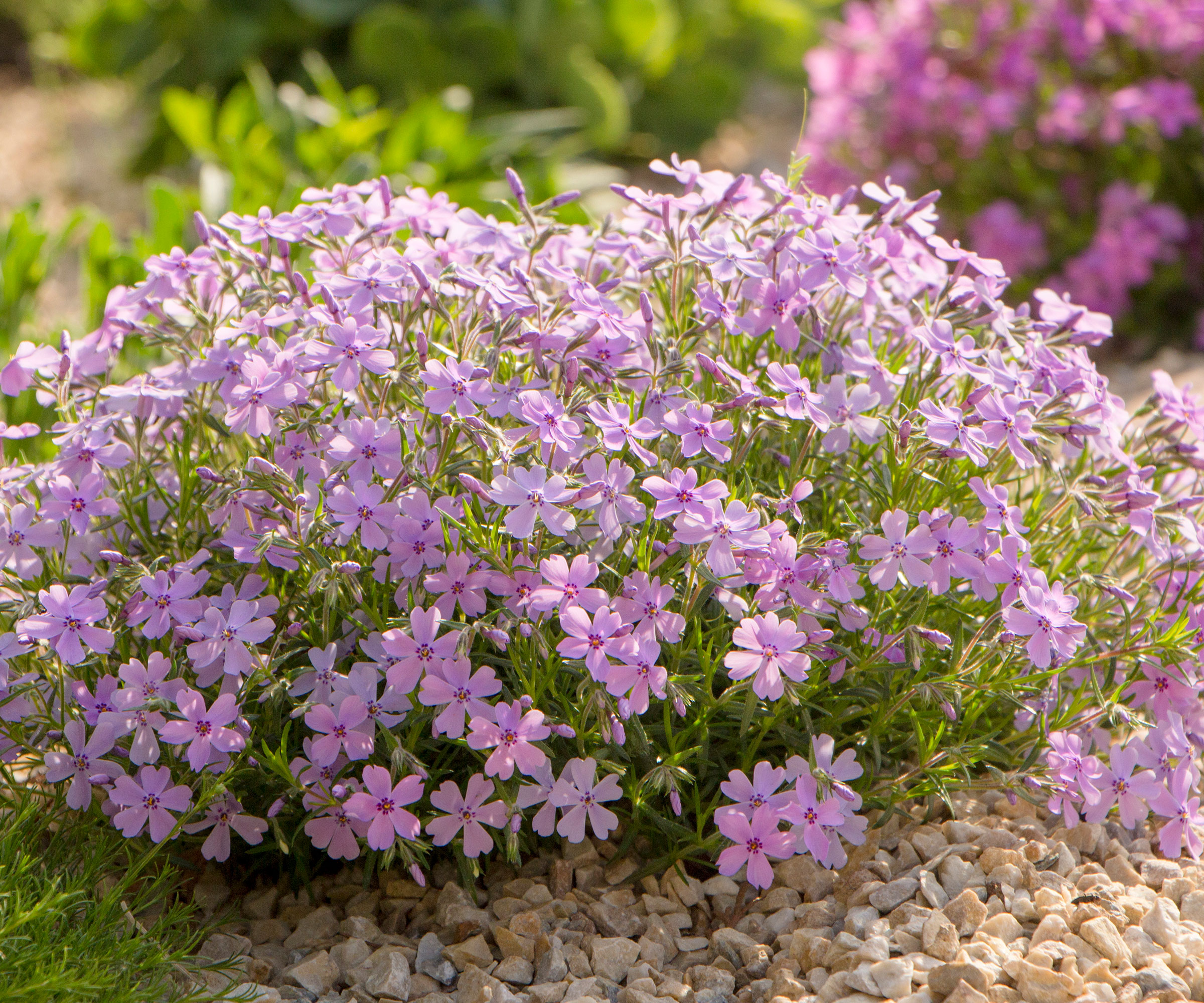
Temperature & Humidity
Creeping phlox performs best where temperatures remain relatively mild, between 65-75 degrees F (18-24 C) Still, plants are able to withstand changes in weather well, tolerating both high summer heat and low winter temperatures.
Creeping phlox is also adapted to a wide range of humidity levels, making them a good addition to almost any early spring garden. This includes those that remain cool later in the season as well as those in which the weather warms up quickly.
Soil
Determining where to plant creeping phlox is not a decision to be taken lightly. Garden beds should be rich in organic matter and drain exceptionally well. The addition of finished compost and other amendments at planting time helps improve soil structure and fertility.
Creeping phlox will tolerate a wide range of soil types, including those that are sandy or rocky, but fertile soils are best.
Where to Plant Creeping Phlox
Creeping phlox is well-suited to the home landscape. This includes cottage gardens as well as more naturalized spaces. You can even use them in pollinator gardens. The early blooms of creeping phlox provide a good food source for pollinators before most other plants begin to flower.
As a low-growing ground cover, creeping phlox are a welcome addition to mixed borders and foundation beds. Grow creeping phlox in pots or hanging baskets to draw the attention of guests with containers that spill with seasonal color.
Though many gardeners prefer to position creeping phlox plants where they can easily see their cheery spring blooms, they’re also well-suited to less than ideal garden spaces. Plant creeping phlox to stop erosion in a sloped yard as well as for its beautiful spring blooms.

How & When to Plant Creeping Phlox
Plant creeping phlox in the garden when conditions are cool, either early spring or fall. Planting in autumn often yields the best results, as it allows ample time for new roots to develop during winter. Larger specimens will likely flower in their first season, but plants grown from seed typically require 2-3 years before blooming.
Creeping phlox are fairly easy to grow from seed, especially if you direct sow seeds in the garden. Scatter seeds into weed-free, prepared beds in fall or as soon as you can work the soil in spring.
Creeping phlox is also an excellent candidate for winter sowing. They’re also an ideal variety for starting seeds indoors. Give seeds consistent moisture, warmth, and humidity to help them germinate, which occurs as little as 1-2 weeks from planting.
Fertilizer
Though optional, experienced gardeners understand the benefits of routine fertilization. For creeping phlox plants, apply a well-balanced feed in late winter or early spring. Feeding during this time of year helps promote the growth of new foliage as the weather warms and increases bloom production.
Liquid or fast-acting fertilizers, specifically those high in phosphorus, are good choices for creeping phlox.
Problems, Pests & Diseases
Though resistant to disease, plants often struggle where growing conditions are not ideal. For example, in beds with poor drainage or air circulation where fungal infections are known to thrive.
Diseases like anthracnose or powdery mildew are the most common creeping phlox problems. A typical symptom of powdery mildew is creeping phlox that’s dried out and yellow. Water plants at the base to prevent this issue and stop it from spreading.
Aphids, spider mites, and nematodes are also cause for concern. Monitor plants throughout the growing season to catch issues fast and start treating them immediately. Use an organic insecticidal soap to treat pest infestations.
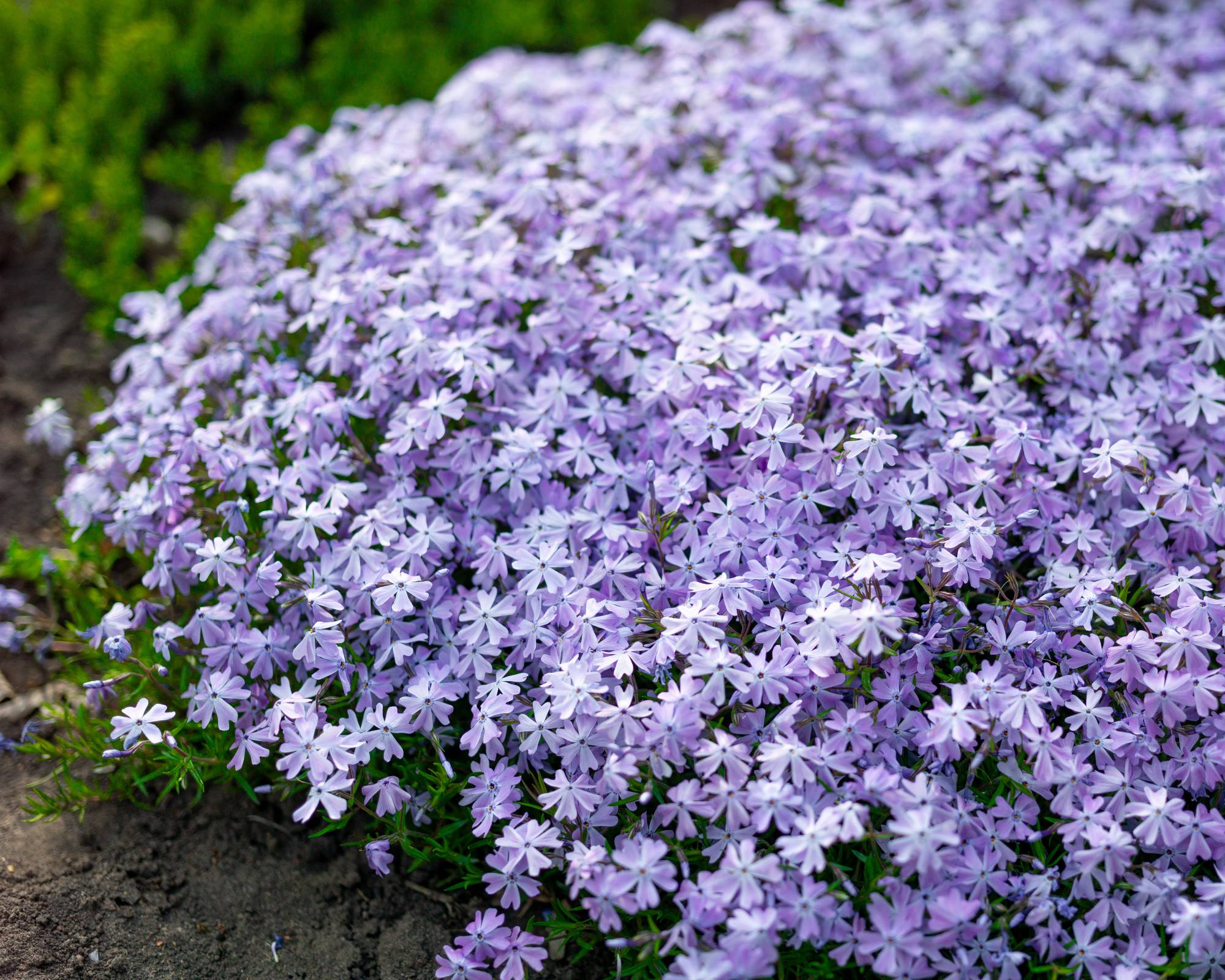
Propagation
Though many choose to grow plants from seed, you can also propagate creeping phlox from cuttings or division. Division is generally considered more difficult, as the plant's root system can be quite delicate.
To propagate creeping phlox by division, dig up the plant, being careful to preserve the root ball. Cut through the center of the plant and the roots with a spade or sharp gardening knife.
Our gardening experts recommend the Garden Guru Hori Hori Knife now available in the Gardening Know How Shop for a sharp and versatile tool that not only helps with propagating perennials, but also helps you plant bulbs, harvest vegetables, and comes with a durable sheath you can strap onto your belt for easy access anywhere in the garden.
Replant one half of the phlox in the original hole and plant the other anywhere you want more of the colorful ground cover. Repeat this process every few years to create healthier plants and expand your garden.
Another option is to take cuttings from creeping phlox. Cuttings from new growth root quickly. Propagate plants using this method in summer or fall. Dip cuttings in a plant hormone and plant in a soilless medium. Give cuttings constant warmth and humidity to speed up the process. Transplant rooted cuttings into prepared beds or pot them into individual containers.
Pruning
Cut back stems after flowering to promote a second bloom. You can also cut the plant back in late winter to allow for rejuvenation. Pruning creeping phlox this way encourages new, more compact stems that will produce flowers.
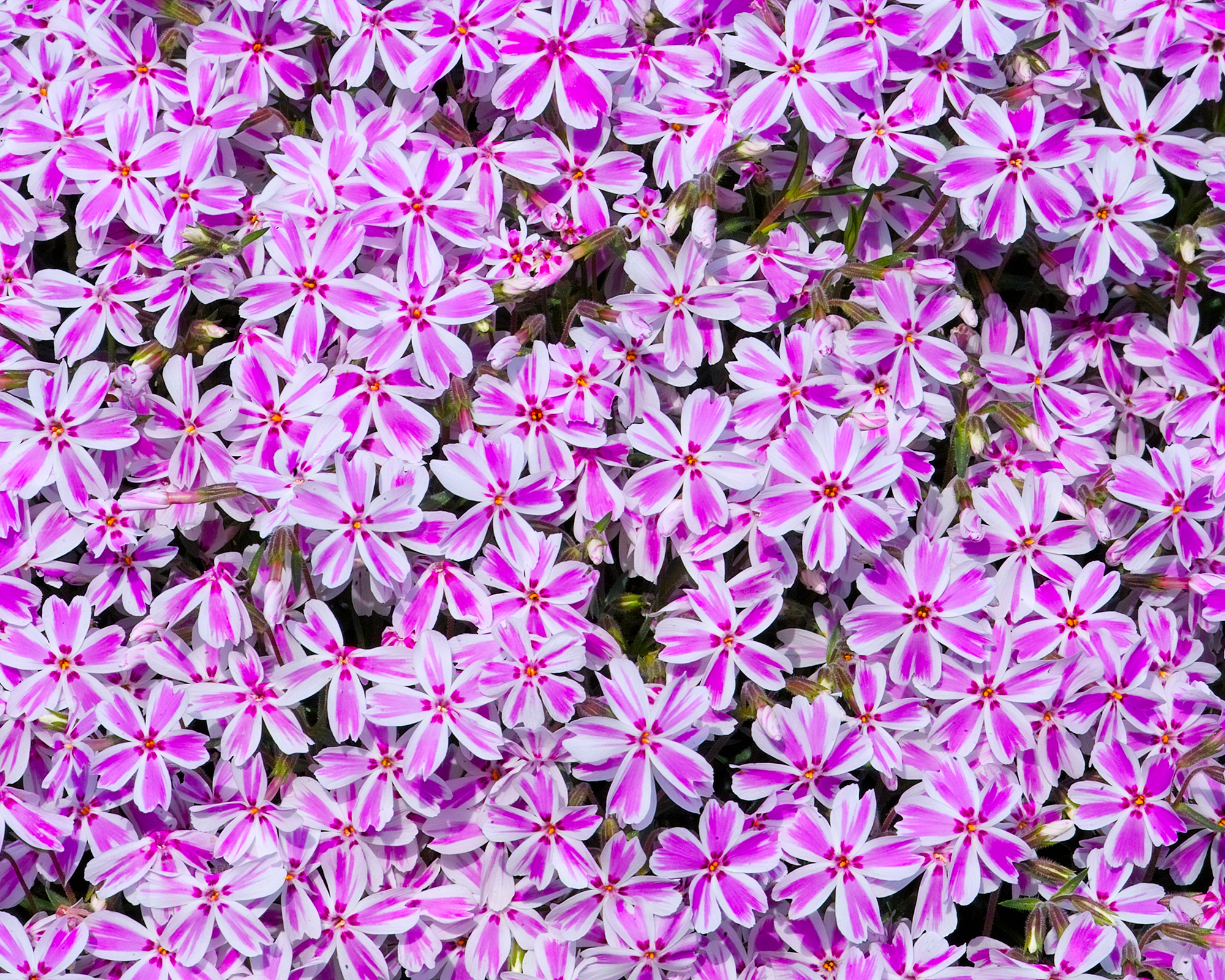
Common Creeping Phlox Varieties
- ‘Amazing Grace' Ideal for growers looking to diversify beds, ‘Amazing Grace' is best known for its striking white flowers. Its hardiness and resistance to cold make it a good choice for cooler climates and use in containers.
- ‘Fort Hill’ Each spring, gardeners can expect ‘Fort Hill’ phlox to produce an abundance of brilliant pink blooms. Star-shaped flowers cover plants in their entirety, helping to craft a memorable spring display.
- ‘Scarlet Flame’ True to its name, this variety is prized for its highly-saturated blooms. Large plants grow quickly to fill beds and hanging baskets and offer a gentle, but alluring fragrance.
Frequently Asked Questions
Can you plant creeping phlox in a pot?
Creeping phlox is an excellent candidate for growth in pots. Compact, low-growing varieties are especially well-suited to use in hanging baskets. Though well-adapted to container culture, routine watering and fertilization is essential throughout the growing season.
Will creeping phlox choke out other plants?
As a ground cover, creeping phlox is praised for its rapid spread. This trait can, however, become problematic. Such is the case in mixed borders, where the plant may overtake or crowd out less vigorous species. Though its habit is sometimes considered aggressive, creeping phlox is not generally categorized as an invasive species.
Explore More Spring Garden Favorites
- Add elegant, early-blooming shrubs to your landscape for a dazzling display this spring.
- Ensure peonies give you plenty of pretty blooms this year. Follow these 6 tips for peony care in spring to give plants a head start.
- Keep your garden growing strong from spring into summer! Start these shade-loving flowers from seed now for beautiful summer blooms.
- Discover more plants we love in the Gardening Know How Shop and find the perfect pairings for creeping phlox to make your spring garden shine!
This article features products available from third party vendors on the Gardening Know How Shop. Keep in mind that our plant inventory is limited - so if you’re thinking of purchasing, don’t wait!

Tonya Barnett has been gardening for 13 years. Flowers are her passion. She has transformed her backyard into a cut flower garden, which she regularly chronicles on her YouTube channel http://www.youtube.com/@tonyawiththeflowers.
- Bonnie L. GrantWriter
- Amy DraissDigital Community Manager
